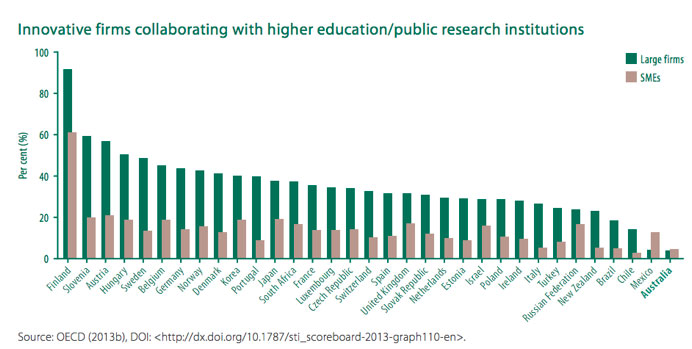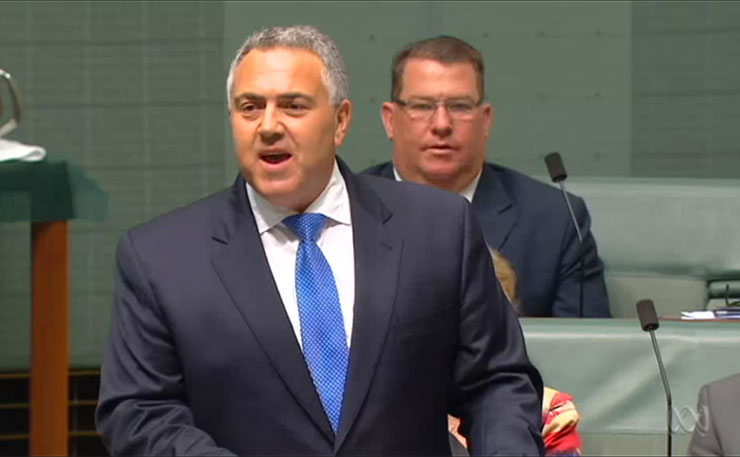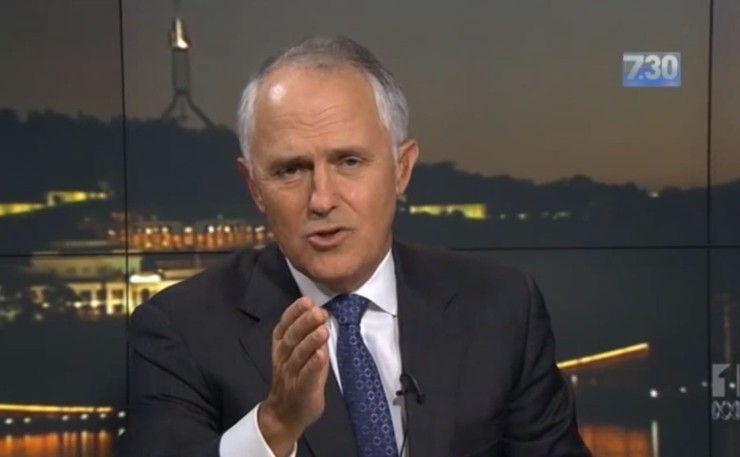There’s nothing new about Malcolm Turnbull’s “ideas boom”, writes Ben Eltham.
The word “innovation” is a very old one, with a fascinating history. For the ancient Greeks, it was “kainotomia”, literally a “new cutting” in a mine shaft. For the Latin-speaking Christians, it was “Innovo”, to renew. “Innovation” then appears in English and French around the end of the thirteenth century, having been adapted from the Latin.
As the great Canadian scholar of innovation Benoit Godin informs us, by the time of the European Reformation, innovation had acquired a negative connotation. It was a heresy; a change for the worse.
In 1548, King Edward VI issued a Proclamation Against Those That Doeth Innouate, which prohibited his subjects from personal interpretations of Church doctrine. “No maner persone, of what estate, order, or degree soever he be, of his private mynde, will or phantasie, do omitte, leave doune, change, alter or innovate any order, Rite or Ceremonie, commonly used and frequented in the Church of Englande,” the Proclamation read.
It wasn’t until the second half of the 20th century that innovation acquired its current meaning of technological change and commercialised invention. The shift was bound up in the dramatic advances made by western science during the Second World War, when large corporations allied to the military introduced one miraculous technology after another – plastics and televisions, moon landers and nuclear missiles.
Innovation, in this sense, was a concept codified by economists – most influentially by Joseph Schumpeter, a failed finance minister from Austria who became a prominent economist at Harvard. Innovation, in this sense, was all about the economy. Research and development – the now ubiquitous “R&D” – drove innovation, and innovation created prosperity and wealth. It became the elixir of economic growth.
This is the point we have reached in Australian public policy, where Prime Minister Malcolm Turnbull can welcome us all to the “Ideas Boom”, and largely get away with it.
Turnbull was launching a new National Innovation and Science Agenda, a $1.1 billion strategy to address Australia’s failing performance on innovation with a suite of 28 federal government initiatives.
“There’s never been a more exciting time to be an Australian,” Turnbull intoned, with the straightest of straight faces. “We need to embrace new ideas in innovation and science, and harness new sources of growth to deliver the next age of economic prosperity in Australia.”
The need for a new agenda on innovation is not seriously contested. If you accept that economic growth is good (a shibboleth few politicians would question), and that innovation helps create it (most economists says yes), then more innovation is by definition a good thing.
The problem is that Australia is not very good at it. While our universities and government research agencies do world-leading research, Australian business struggles to turn those discoveries into profitable enterprise.
Australia’s under-performance in innovation is no secret. On one count, there have been as many as 25 official government reports into innovation and science and technology in recent decades, including John Howard’s Backing Australia’s Ability and the Rudd government’s innovation report by Terry Cutler, Venturous Australia.
Explanations for why Australia lags the rest of the rich world are numerous, but most experts seem to agree that the problem lies in the bridge between basic research and new products reaching the marketplace. In other words, it’s the commercialisation, stupid. Australian businesses don’t research enough, don’t invest enough in developing products based on research, and don’t take enough risks.
Government policy has also been chaotic and disorganised. The University of Queensland’s Mark Dodgson, a veteran observer of innovation policy over 30 years, points out that “Commonwealth spending on science and innovation has declined by 20 per cent as a share of GDP over the past 20 years.” Business spending on own-firm R&D is also declining. “We’re coming from a long way behind,” Dodgson concludes.
The graph below comes from an Australian Council of Learned Academies report entitled “Translating research for economic and social benefit: country comparisons”. When it comes to the proportion of large and small firms collaborating with public universities, Australia places stone-cold last in the OECD.

A business culture that tends to focus on the safe and the staid is partly responsible, as is an economic structure that has long skewed towards the exploitation of mineral resources and market dominance, rather than the creation of new intellectual capital.
Numerous studies have found Australian business plagued by a risk averse culture composed largely of monoglot and conservative populations of fellow directors, managers and accountants. Recent qualitative research into Australian board diversity carried out by the Macquarie Graduate School of Management and international recruitment firm Blenheim partners found that just 6 per cent of ASX100 board directors are what could be called “technologists”: technology officers, scientists or academics. In contrast, 86 were chief executives and executives from industry.
Turnbull’s new innovation package does make some gestures towards addressing these problems. There is a focus on encouraging more risk-taking, by allowing more flexible bankruptcy provisions for failed firms. There is also welcome increase in funding for the CSIRO, the ARC and for targeted start-up, venture capital and commercialisation programs.
However most of the programs are small and piece-meal. $1.1 billion is not a lot of money, given it restores about a third of the approximately $3 billion cut from innovation investment by the Coalition since 2013. As Dodgson wrote Tuesday, “only in Australia could we announce something called a ‘Global Innovation Strategy’ and only assign $7 million a year for it.”
There is also an element of basic repair going on. You could even say that the Innovation policy is more about triaging the blood less in crucial organisations than it is about sparking a new boom in beneficent creativity.
Indeed, the real disruption of Malcolm Turnbull’s launch yesterday was the innovation of a Coalition government talking about science and innovation without ridiculing it.
Who can forget the moment in the 2013 election campaign when Joe Hockey deliberately leaked a cut in Australian Research Council funding to the Daily Telegraph, singling out a bemused University of Sydney philosopher for his study of Hegel. Abbott and Hockey demonstrated their contempt for science (indeed, for reason itself) at every opportunity, sniping at climate scientists as ideological opponents from the left.
It’s amazing anyone is giving Turnbull any play at all in innovation, considering the record of the Coalition government he leads.
In Joe Hockey’s horror 2014 budget, the Coalition cut $885 million from science and innovation, including $115 million from the CSIRO, $80 million from the Cooperative Research Centres, $75 million from the Australian Research Council, $27 million from the Australian Nuclear Science and Technology Organisation, plus $174 million from funding PhD students.

It vowed to abolish NICTA, the National ICT research organisation, as well as the commercialisation body Commercialisation Australia. Nearly every dollar of government funding for clean tech and renewable energy research was also eliminated, and the government is still trying to abolish the Clean Energy Finance Corporation and Australian Renewable Energy Agency.
The CSIRO haemorrhaged jobs, losing nearly 1,400 highly qualified staff since the 2014 budget. New Matilda understands there are similar crises in several high-profile medical research centres, which are running out of funds to employ key research leaders. Funding ratios for academics applying to the ARC and NHMRC are also at historic lows. The National Health and Medical Research Council, for instance, recently had a project funding rate of just 13.7 per cent, the lowest in history.
According to the Australian Society of Medical Research’s Phoebe Phillips, “we are at a critical point, losing expensively trained, highly skilled researchers, to an extent that it may take years to recover the loss of valuable intellectual capital.”
Yesterday’s announcements do not adequately address the damage already done. The extra funding for the ARC in yesterday’s announcement does not make up the cuts from Hockey. The CSIRO gets $200 million back, but will take years to rebuild after the radical amputations of last year. The government admits as much. “We’re not actually looking for big spending items, we’re looking for the change to the culture in our economy,” Industry, Innovation and Science Minister Christopher Pyne said at the launch.
Meanwhile, new Communications Minister Mitch Fifield is busy getting on with the start Malcolm Turnbull made on deliberately sabotaging Labor’s fibre-to-the-premises National Broadband Network. Instead of a world-standard fibre optic broadband network, Australia is instead a “multi-technology mix” that will be lower quality and more expensive than the original version. Broadband policy in this country is a slow-moving train wreck, but Labor seems incapable of landing a punch on Turnbull’s mismanagement of it.
Then again, there’s another sense of Innovo – not so to “make new”, but to “do over”.
Back in 2008, New Matilda covered the release of Terry Cutler’s innovation report for Kevin Rudd. Many of his ideas were the same ones ready to boom in Turnbull’s statement yesterday.
[Cutler] proposes a significant increase in federal spending on innovation, to bring Australia’s levels of R&D up to the top quartile of OECD levels. There should be an increase in funding to the Australian Research Council, the premier fund that supports university research, to ensure that university research is fully funded and not forced to cadge funds from other aspects of university activities. The R&D tax offset should be recast as a tax credit, so that start-up companies not yet in tax profit can still access the funds.
Sadly, none of these recommendations have come to pass. Australia’s R&D levels are low and falling. Funding to the Australian Research Council has reduced in real terms. The R&D tax incentive is still largely unreformed.
And for all the government’s obsessions with “STEM” (science, technology, engineering and medicine), the commanding heights of Australia’s economy are still dominated by big banks, big mining companies, and the cosy supermarket duopoly.
But that’s innovation policy in Australia, where the shiny and new is all too often the dull and ancient, with some new bunting and a derivative font.
Donate To New Matilda
New Matilda is a small, independent media outlet. We survive through reader contributions, and never losing a lawsuit. If you got something from this article, giving something back helps us to continue speaking truth to power. Every little bit counts.




